Global cell therapy market is estimated to be valued at USD 2,832.1 Mn in 2025 and is expected to reach USD 5,383.4 Mn by 2032, exhibiting a compound annual growth rate (CAGR) of 9.6% from 2025 to 2032.
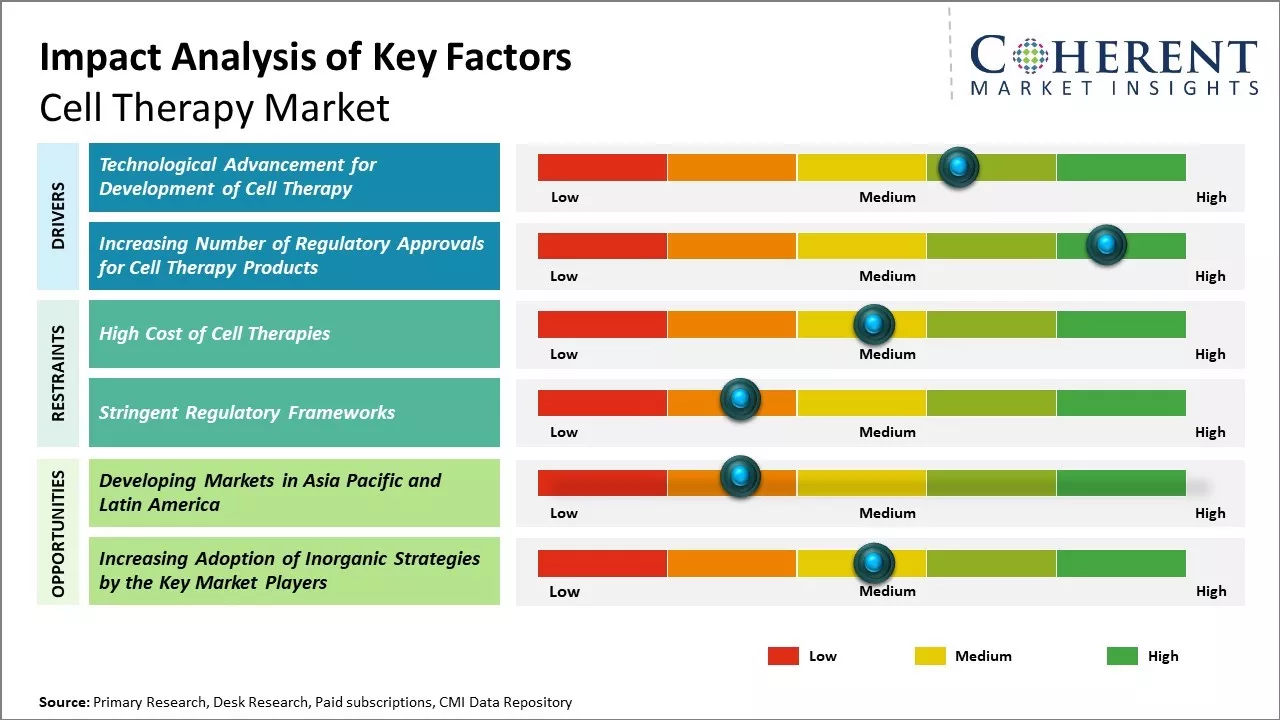
Discover market dynamics shaping the industry: Request sample copy
Global cell therapy market is expected to witness significant growth over the forecast period. Rising prevalence of chronic diseases and increasing funding for cell-based research are some key factors driving the growth of the market. In addition, advancements in cell culturing technologies and growing awareness about the therapeutic potency of cell therapy are further supporting the increased adoption of these therapeutics. Moreover, the development of novel treatments for conditions like cancer and cardiac muscular degeneration is also anticipated to boost its demand.
Market Driver – Technological Advancement for Development of Cell Therapy
Key players are involved in developing and launching various types of technologies for cell therapy, and this is expected to provide immense growth opportunities for industry players in the cell therapy market. For instance, in August 2022, Cytiva, a subsidiary of Danaher Corporation, and Forecyte Bio, a provider of CDMO service designed for cell gene therapy, collaborated to accelerate the development and manufacturing of cell and gene therapies in China and the U.S. Forecyte Bio will use Cytiva’s FlexFactory platform to launch its contract development and manufacturing organization (CDMO) business for pharmaceutical products.
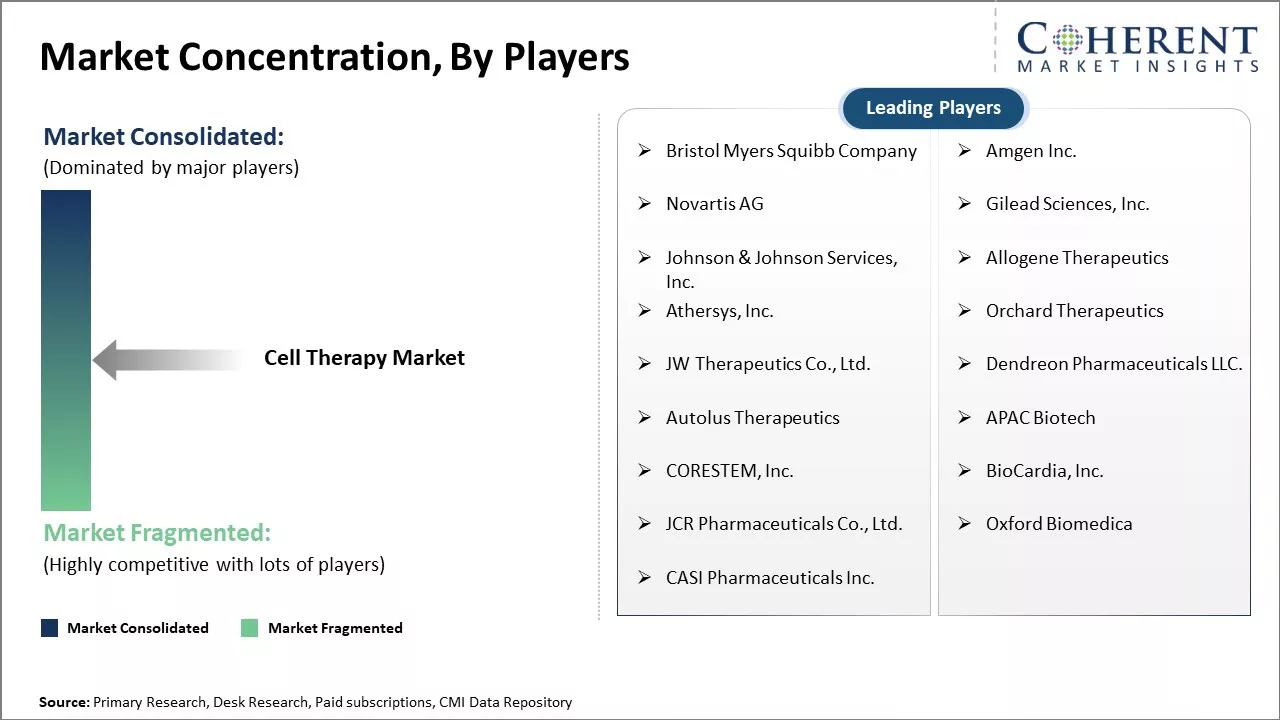
Get actionable strategies to beat competition: Request sample copy
Market Driver – Increasing Number of Regulatory Approvals for Cell Therapy ProductsManufacturers of cell therapy product candidates are engaged in receiving regulatory approvals to enhance their cell therapy process, and this is expected to drive the cell therapy market growth. For instance, in May 2022, the U.S. Food and Drug Administration announced that it had approved Novartis AG’s chimeric antigen receptor (CAR) T-cell therapy, Kymriah, for the treatment of adults with relapsed or refractory follicular lymphoma (FL) after two or more lines of systemic therapy.
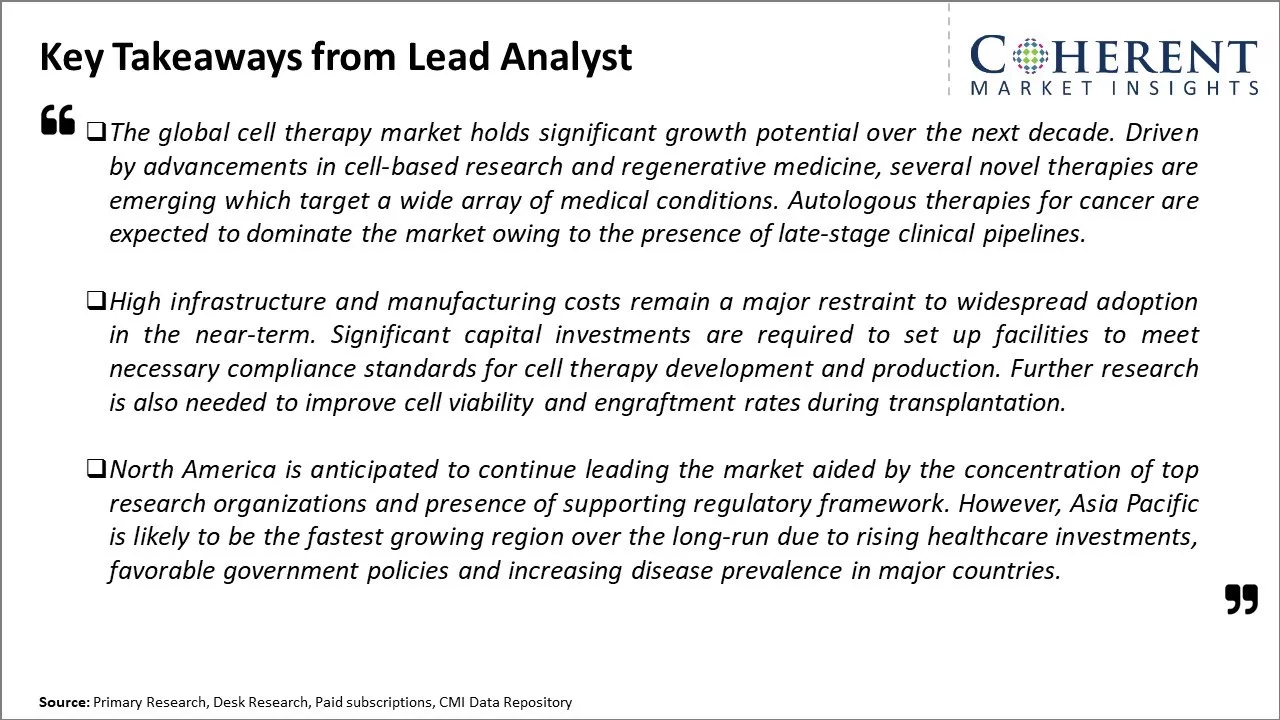
To learn more about this report, Request sample copy
Market Challenges – High Cost of Cell TherapiesHigh cost of cell therapies is one of the biggest challenges, with financial implications for patients, payers, and providers. Therefore, it is essential to reduce the prices quoted by companies, in order to enhance the adoption of these therapies, and this is expected to hamper the market growth over the forecast period. In April 2022, Yescarta, a cell therapy was approved by the U.S. FDA, developed vy Gilead Sciences, Inc., a pharmaceutical company, for the treatment of certain B-cell lymphomas. The listed price for axicabtagene ciloleucel (Yescarta) in the U.S. is US$ 373,000.
Market Opportunities – Increasing Adoption of Inorganic Strategies by the Key Market Players
Increasing adoption of inorganic strategies such collaboration, agreement, and others by key players in cell therapies is expected to drive growth of the cell therapy market in the near future. For instance, in January 2022, Century Therapeutics, a biotechnology company, in collaboration with Bristol Myers Squibb, a pharmaceutical company, announced the initiation of research & development and commercialization of four induced pluripotent stem cell derived naturally who works as killer cell and T cell programs for hematologic malignancies and solid tumors. Under this collaboration agreement, Century Therapeutics will focus on the development and preclinical trials of cell therapy while Bristol Meyer Squibb will focus on clinical development and commercialization activities.
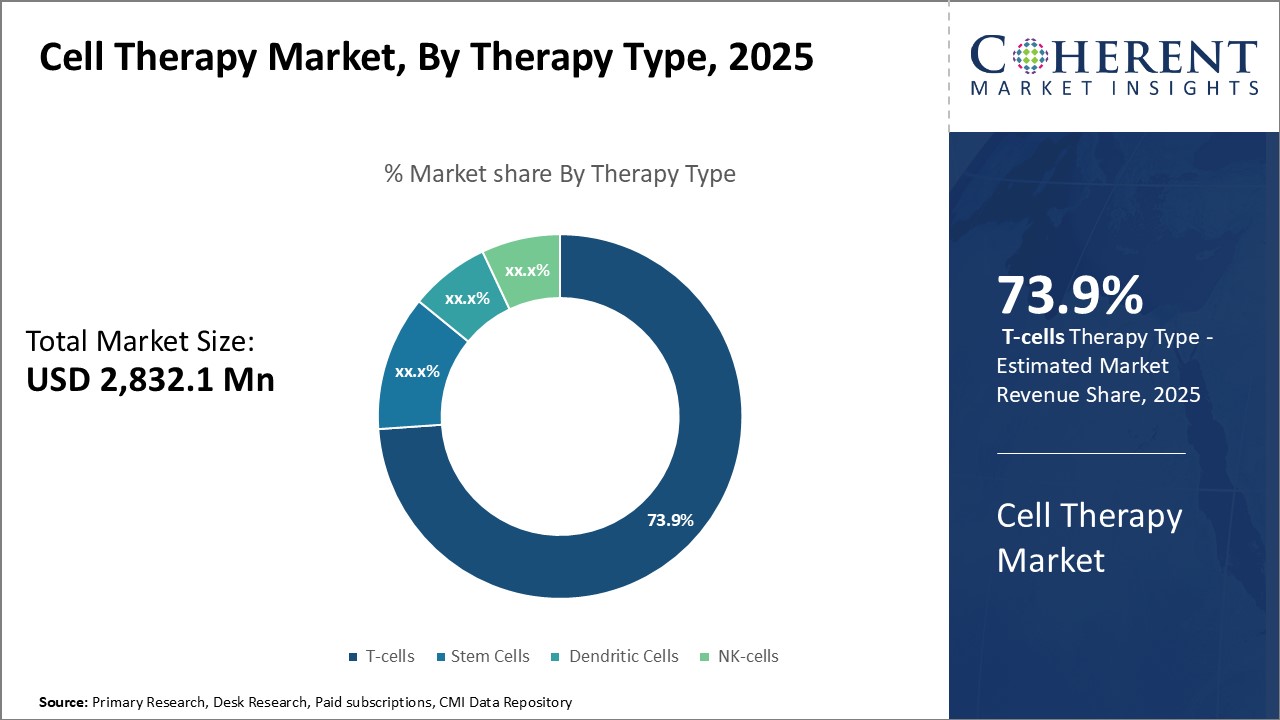
Discover high revenue pocket segments and roadmap to it: Request sample copy
Insights, By Therapy Type: Advanced immunotherapies boosts T-cell segment growthTherapy Type segment is sub-segmented into stem cells, T-cells, dendritic cells, and NK-cells. T-cells segment is expected to hold 73.9% of the market share in 2025 owing to strong clinical research outcomes and considerable investments made in T-cell therapies by biotech companies. T-cells or T lymphocytes form an essential part of the adaptive immune system, and are capable of recognizing infected or cancerous cells. Research in recent years has shown the potential of engineered T-cells, known as CAR T-cell therapy, to identify and destroy cancer cells that traditional drugs are unable to eliminate. Pioneering drugs such as Kymriah and Yescarta achieved impressive complete remission rates in late-stage clinical trials for blood cancers. Their subsequent approval by regulatory bodies has validated CAR T-cell therapy as a mainstream treatment option. Key factors powering the T-cell segment include improved understanding of T-cell biology and immunology, development of novel technologies for T-cell engineering and expansion, refinement of lymphodepletion regimens to improve T-cell engraftment, and identification of novel tumor-associated antigens. Major biopharma companies are funneling billions towards advancing the next generation of personalized T-cell therapies with enhanced safety profiles and expanded capabilities against solid tumors. Academia-industry partnerships are collaborating to decipher the complex interplay between cancer and immunity which could uncover novel targets and strategies.
Insights, By Indication: Increasing Prevalence of Cancer Drives Oncology Segment
Indication segment is sub-segmented into oncology, cardiology, neurology, and others. Oncology segment is expected to hold 70.2% of the market share in 2025 due to increasing prevalence of cancer. For instance, according to the National Cancer Institute, in 2022, the estimated new cases of multiple myeloma were approximately 34,470 in the U.S. Conventional therapies such as chemotherapy, radiation and targeted drugs have significant limitations including toxicity, development of drug resistance and failure to cure metastatic cancers. This has created a pressing clinical need for novel modalities that can boost anti-tumor immunity through cell-based interventions. Cell therapies leveraging the immune system's intrinsic ability to recognize and eliminate rogue cells have emerged as one of the most promising new anti-cancer strategies. Pioneering approaches such as CAR T-cell therapy and TIL (Tumor Infiltrating Lymphocyte) therapy have illustrated the potential for durable remissions even in heavily pretreated patients. Continued clinical validation of these therapies coupled with expansion into additional cancer types will consolidate oncology as the predominant indication segment. Other factors supporting growth include greater accessibility of approved cell therapies compared to other applications, significant investments from pharma companies, and heightened focus on combination strategies with other immunotherapies.
Insights, End User: Increasing Grant Approvals
End User segment is sub-segmented into hospitals, clinics, and research institutes. Hospitals segment is expected to hold 41.7% of the market share in 2025 owing to increasing grant approvals by non-government organizations for research and development activities. For instance, in May 2022, The Ottawa Hospital, Ontario, Canada received a total of US$ 1.85 million in funding to use stem cells and regenerative medicine to develop new therapies for septic shock, bone and joint conditions, and newborn lung damage, as well as to advance patient engagement in research. The new peer-reviewed grants are funded by the Stem Cell Network as part of its US$ 19.5 million investment in research projects across the Canada. Researchers from the University of Ottawa, Children's Hospital of Eastern Ontario (CHEO), and many other institutions are partnering on the project.
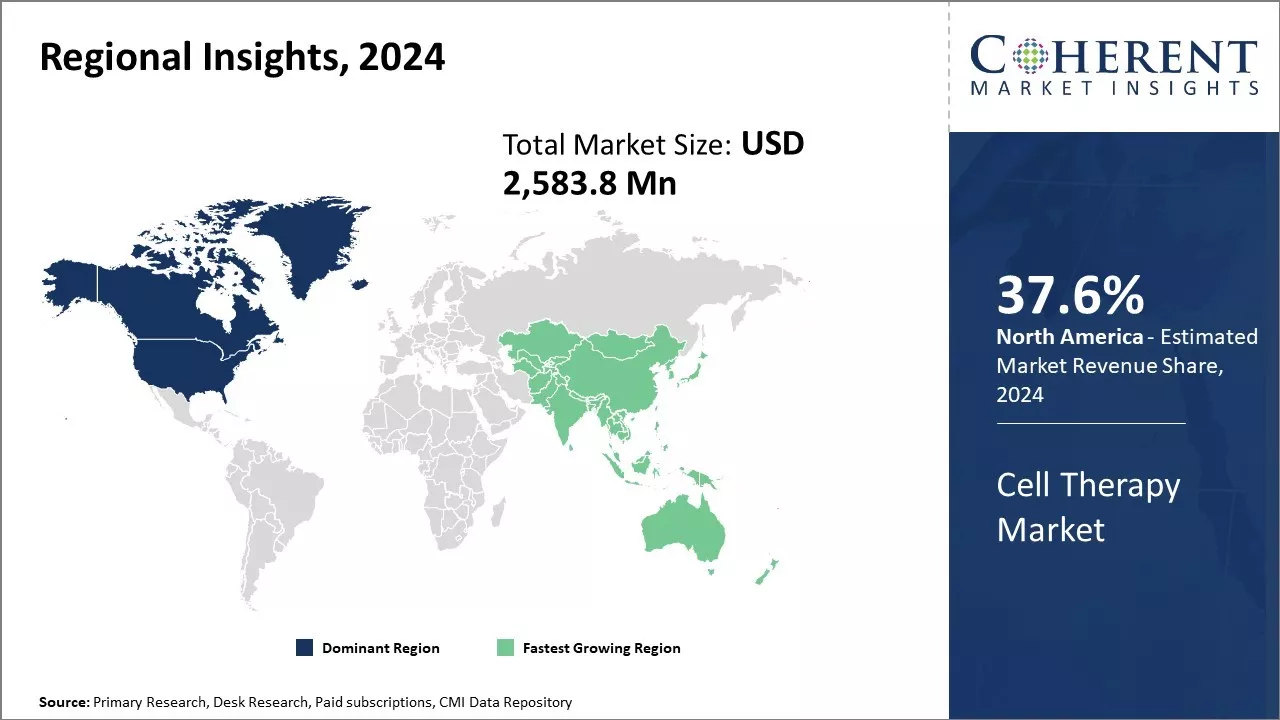
Need a Different Region or Segment? Customize now
North America remains the dominant region in the global cell therapy market and is anticipated to hold 38.1% of the market share in 2025, owing to strong presence of major market players and state-of-the-art infrastructure for research and development. The U.S. accounts for the largest share in the regional market mainly due to increasing investments in clinical research by both public and private sectors of the country. Rising adoption of advanced cell therapies for treatment of chronic diseases such as cancer, neurological disorders, and cardiac diseases has boosted the demand for cell therapy in North America. Moreover, presence of well-established healthcare system, high healthcare spending capability of population, and favorable reimbursement policies have encouraged clinical trials and commercialization of new cell therapy products in the region. Many biotech companies have set up their manufacturing and R&D facilities in North America to cater to the growing needs. These factors have made North America a very lucrative market for long term growth of cell therapy manufacturers.
Asia Pacific region is emerging as the fastest growing market for cell therapies globally. Countries such as China, India, South Korea and Japan are witnessing expansion of their healthcare industries at an exponential pace. Rapid economic development and rising healthcare expenditure have increased healthcare access and priorities for treatment of fatal diseases in Asia Pacific. Countries like China have particularly encouraged growth in this sector through initiatives to develop local manufacturing capabilities and research infrastructure. Domestic companies are collaborating with global players to accelerate clinical development and production of innovative cell therapies. Lower manufacturing costs and growing medical tourism in certain Asia Pacific countries are attracting companies to establish subsidiaries in this region. Increasing number of advanced therapy centers and clinical trials reflect huge potential of Asia Pacific cell therapy market.
Cell Therapy Market Report Coverage
| Report Coverage | Details | ||
|---|---|---|---|
| Base Year: | 2024 | Market Size in 2025: | USD 2,832.1 Mn |
| Historical Data for: | 2020 To 2024 | Forecast Period: | 2025 To 2032 |
| Forecast Period 2025 to 2032 CAGR: | 9.6% | 2032 Value Projection: | USD 5,383.4 Mn |
| Geographies covered: |
|
||
| Segments covered: |
|
||
| Companies covered: |
Bristol Myers Squibb Company, Amgen Inc., Novartis AG, Gilead Sciences, Inc., Johnson & Johnson Services, Inc., Allogene Therapeutics, Athersys, Inc., Orchard Therapeutics, JW Therapeutics Co., Ltd., Dendreon Pharmaceuticals LLC., Autolus Therapeutics, APAC Biotech, CORESTEM, Inc., BioCardia, Inc., JCR Pharmaceuticals Co., Ltd., Oxford Biomedica, CASI Pharmaceuticals Inc. |
||
| Growth Drivers: |
|
||
| Restraints & Challenges: |
|
||
Uncover macros and micros vetted on 75+ parameters: Get instant access to report
*Definition: The cell therapy involves the development, manufacturing and commercialization of therapies that utilize human cells to treat diseases. Cell therapy is the prevention or treatment of human disease by the administration of cells that have been selected, multiplied, and pharmacologically treated or altered outside the body (ex vivo).
Share
Share
About Author
Abhijeet Kale is a results-driven management consultant with five years of specialized experience in the biotech and clinical diagnostics sectors. With a strong background in scientific research and business strategy, Abhijeet helps organizations identify potential revenue pockets, and in turn helping clients with market entry strategies. He assists clients in developing robust strategies for navigating FDA and EMA requirements.
Missing comfort of reading report in your local language? Find your preferred language :
Transform your Strategy with Exclusive Trending Reports :
Frequently Asked Questions
Joining thousands of companies around the world committed to making the Excellent Business Solutions.
View All Our Clients
US Reciprocal Tax Impact Analysis On Cell Therapy Market
Stay updated on tariff changes with expert insights and timely information